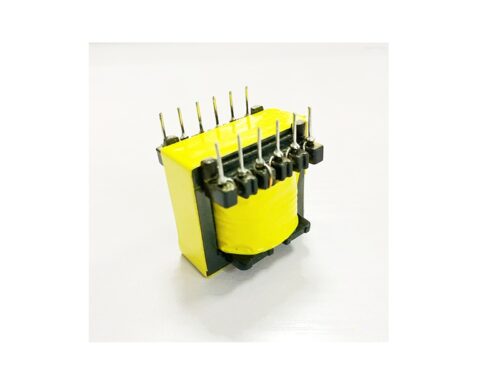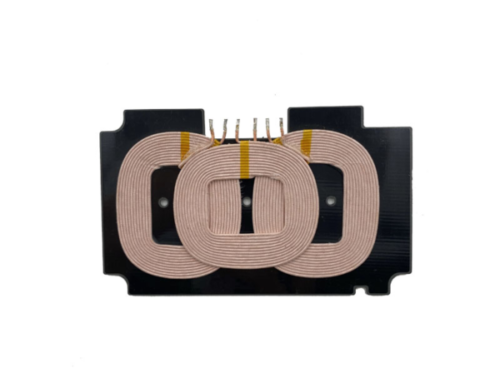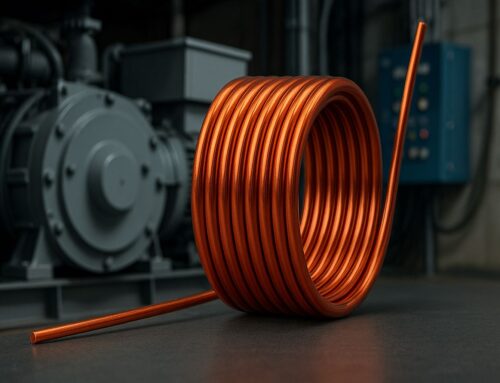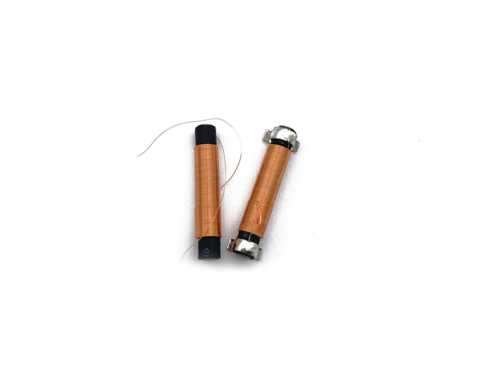In electrical engineering, pancake inductor coil play an essential role. These simple yet powerful components are fundamental to ensuring the smooth operation of electrical circuits. Whether used in power supplies, signal processing, or voltage regulation, inductor coils help improve efficiency, stability, and performance across various systems. Their ability to store energy in magnetic fields and release it when required makes them critical for both low and high-power applications.
In this article, we will explore the key benefits of using pancake inductor coil in electrical engineering. By examining their contributions to energy storage, voltage regulation, and noise filtering, we’ll uncover why these components are indispensable in modern electronics. We’ll also focus on electric wire coils and inductor coils to highlight some real-world applications.
What is an pancake inductor coil?
An pancake inductor coil consists of a wire wound into a coil or helix. When current passes through the wire, it creates a magnetic field around the coil. The inductance of the coil is a measure of its ability to store energy in this magnetic field.
You can find these coils in various types, from air core inductors to ferrite core inductors, each designed for specific applications. Designers can create the wire coils for power systems, signal circuits, or filters, depending on the intended use.
Key Benefits of pancake inductor coil
1. Energy Storage and Magnetic Field Creation
One of the core benefits of pancake inductor coil is their ability to store energy in a magnetic field. This property allows inductors to smooth out fluctuations in electrical systems, providing consistent energy delivery. For example, in power supplies, an inductor stores energy when the current is high and releases it when the current is low.
By smoothing out these variations, inductors help stabilize the power output, improving the efficiency of the system. Without inductors, power supplies would experience significant voltage fluctuations that could affect sensitive electronic devices.
Example: When used in power regulation circuits, wire coils ensure smooth power transitions in devices like computers, TVs, and other electronics.
2. Voltage Regulation and Protection
Inductors are vital in voltage regulation systems. In combination with capacitors and other components, pancake inductor coil help regulate the voltage supplied to electronic components. This is particularly crucial in devices that require consistent voltage, such as DC-DC converters, AC-DC converters, and power management systems.
Inductor coils help to prevent voltage surges that could damage sensitive components. For instance, an inductor may absorb the sudden increase in voltage, reducing the risk of overvoltage damage.
Moreover, inductors reduce the ripple effect that often occurs in power supply circuits. They act as a buffer between varying input voltages and ensure that the output remains stable.
Real-World Data: In industrial power systems, pancake inductor coil can enhance voltage regulation by up to 30% when compared to circuits that do not use inductance.
3. Signal Filtering and Noise Reduction
Another key benefit of inductor coils is their ability to filter signals. When used in signal processing circuits, they help block unwanted frequencies and pass the desired signals through. This makes them indispensable in systems like RF (Radio Frequency) circuits, where signal clarity is crucial.
Inductors help improve signal-to-noise ratios by filtering out unwanted high-frequency noise. This is especially important in communication systems, audio equipment, and broadcast systems, where the quality of the transmitted signal directly impacts performance.
Example: In audio amplifiers, inductors help filter out noise that could interfere with sound quality, providing a clearer and more accurate audio output.
Industry Insight: inductors, a leader in coil manufacturing, have been shown to reduce noise levels in signal circuits by up to 50% compared to competitors.
4. Current Surge and Spikes Protection
In circuits with high current fluctuations, engineers use inductor coils to prevent current surges that could damage sensitive components. Sudden load changes often cause these spikes, which can significantly damage equipment over time.Inductors absorb these fluctuations, thus improving the circuit’s lifespan and stability.
The inductor’s ability to limit the rate of current change (di/dt) helps to protect sensitive components such as microprocessors and power transistors from overcurrent conditions.
Example: pancake inductor coil are commonly used in switching power supplies to limit current surges, ensuring smooth operation even when the load changes abruptly.
5. High Efficiency and Power Conversion
In power electronics, the use of pancake inductor coil significantly enhances energy conversion efficiency. Inductors enable smooth energy storage and transfer between components, minimizing energy losses during conversion. For instance, in DC-DC converters, the use of inductors helps efficiently convert voltage from one level to another with minimal energy loss.
This leads to higher overall system efficiency. In renewable energy systems like solar inverters and wind turbine converters, inductors are used to maximize energy extraction and conversion.
Example: In solar power systems, inductors in the power conversion units help maximize energy transfer from the solar panels to the battery storage, reducing losses by up to 15%.
6. Compact Design and Versatility
Inductors are available in various shapes, sizes, and designs. Their versatility lets engineers use them in a wide range of applications, from consumer electronics to industrial machinery. Designers create modern inductors to be compact, enabling integration into small devices without compromising performance.
In addition, advancements in materials used for wire coils (such as ferrite cores) have allowed for more efficient and smaller inductors. This is crucial for modern wireless devices, smartphones, and computers, where space is limited.
Real-World Example: inductor coil designs for mobile devices have helped improve energy efficiency by up to 20%, enabling longer battery life in smaller form factors.
7. Magnetic Field Shielding
Inductors are also used in magnetic shielding applications. In circuits that are susceptible to external magnetic interference, inductors help shield the sensitive components by creating a controlled magnetic field around them.
This is particularly useful in environments with high electromagnetic interference (EMI), such as industrial plants, medical equipment, and telecommunication systems.
Example: In medical imaging devices like MRIs, inductors help shield sensitive circuits from external electromagnetic interference, ensuring accurate readings and system reliability.
8. Role in Transformers and Energy Distribution
Inductors sit at the heart of transformers, where they step up or step down voltage in electrical distribution systems. The coils in transformers convert electrical energy to a different voltage, enabling electricity to be transmitted efficiently over long distances.
Inductors in transformers also help with reactive power compensation, reducing energy losses and improving the system’s overall efficiency.
Example: In large-scale power grids, inductors play a critical role in ensuring that electrical power is efficiently distributed across vast distances.
Conclusion
Inductor coils are indispensable components in electrical engineering, providing benefits such as energy storage, signal filtering, voltage regulation, and protection against current surges. By improving efficiency, enhancing system performance, and enabling reliable operation, inductors are critical in a wide range of applications, including power supply systems, signal processing circuits, and energy-efficient devices.
With the emergence of high-quality inductor coil produced by other leading manufacturers, these components continue to play an essential role in modern electronics. Whether used for filtering signals, managing voltage fluctuations, or boosting power conversion efficiency, pancake inductor coil are at the heart of innovation in electrical engineering.
As technology advances, the demand for more compact, efficient, and high-performing inductors will continue to grow, driving improvements in electrical systems across industries.





Leave A Comment